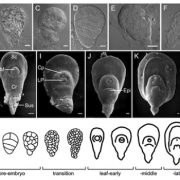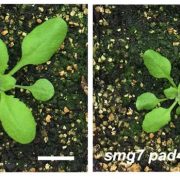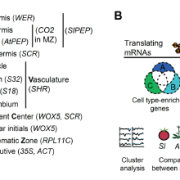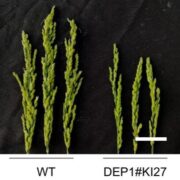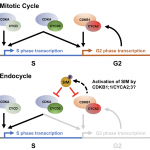The key role of terminators on the expression and post-transcriptional gene silencing of transgenes (Plant J.)
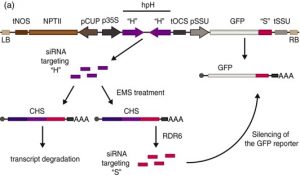 Transgene introduction has been a major tool in modern plant science, but the ability of plants to distinguish ‘self’ from ‘non-self’ can lead to transgene silencing. This mechanism is mediated by the recruitment of RDR6 (an RNA-Dependent RNA polymerases) leading to the production of several siRNAs (small interfering RNAs) targeting the transgenes for silencing. The molecular mechanism behind the susceptibility of transgenes to silencing is still an open question. To address it, Felippes et al. used a GFP reporter that is insensitive to transitive siRNAs silencing to screen EMS mutant lines to identify genes that protect against the formation of secondary siRNAs. In the unmutated plants, GFP expression remains on, but in those that permit silencing the GFP expression is suppressed. The mutant screening identified genes with major roles in transcription termination, revealing the role of terminators in forming secondary siRNAs. Further experiments with showed that a strong terminator with an ability to precisely terminate the transcript will help in decreasing the production of siRNA and maintaining the stability of the transgene. Furthermore, the presence of introns can also help in maintaining the transgene stability, although in some case, position of intron in relation to terminator can lead to formation of siRNAs. This paper demonstrates the importance of the terminator on the expression and post-transcriptional gene silencing of transgenes. (Summary by Sunita Pathak @psunita980) Plant J. 10.1111/tpj.14907
Transgene introduction has been a major tool in modern plant science, but the ability of plants to distinguish ‘self’ from ‘non-self’ can lead to transgene silencing. This mechanism is mediated by the recruitment of RDR6 (an RNA-Dependent RNA polymerases) leading to the production of several siRNAs (small interfering RNAs) targeting the transgenes for silencing. The molecular mechanism behind the susceptibility of transgenes to silencing is still an open question. To address it, Felippes et al. used a GFP reporter that is insensitive to transitive siRNAs silencing to screen EMS mutant lines to identify genes that protect against the formation of secondary siRNAs. In the unmutated plants, GFP expression remains on, but in those that permit silencing the GFP expression is suppressed. The mutant screening identified genes with major roles in transcription termination, revealing the role of terminators in forming secondary siRNAs. Further experiments with showed that a strong terminator with an ability to precisely terminate the transcript will help in decreasing the production of siRNA and maintaining the stability of the transgene. Furthermore, the presence of introns can also help in maintaining the transgene stability, although in some case, position of intron in relation to terminator can lead to formation of siRNAs. This paper demonstrates the importance of the terminator on the expression and post-transcriptional gene silencing of transgenes. (Summary by Sunita Pathak @psunita980) Plant J. 10.1111/tpj.14907



